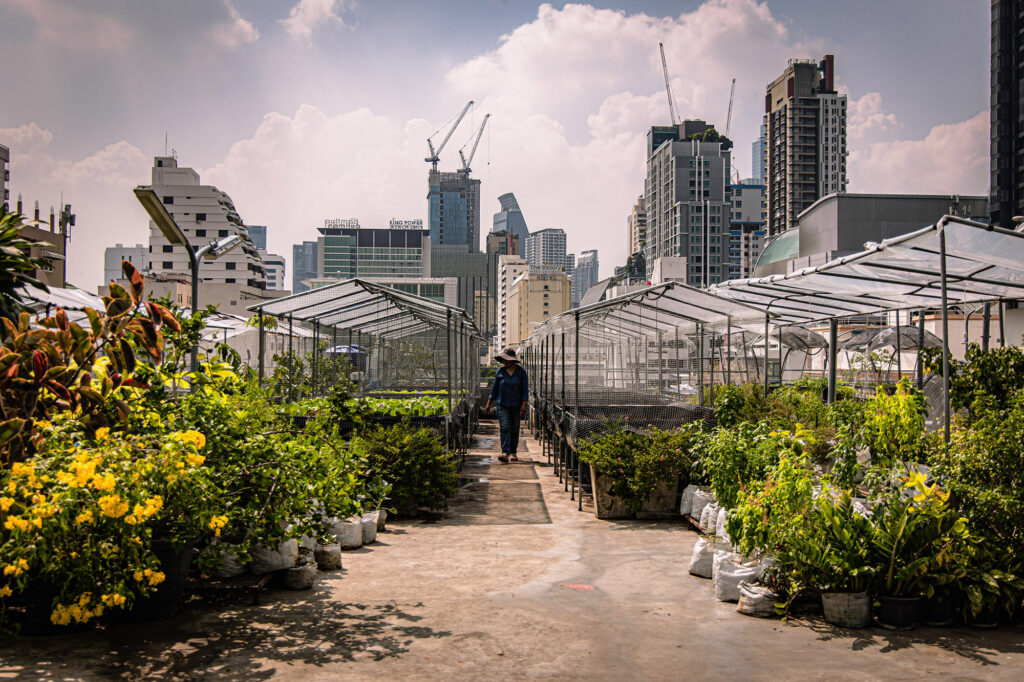The Photo Essay series: SDGs I The Depth of Field
Thailand is among the world’s biggest food exporters, but this status does not guarantee food security for all. Like other countries, it has been facing major challenges caused by climate change, geopolitical conflicts and economic recession — all undermining the country’s achievement of SDG 2
Thailand’s status as one of the world’s major food exporters could encounter hiccups, challenging its ability to ensure food security. Climate change, geopolitical conflicts and economic recession are going to play a significant role in reducing people’s ability to access food. The impact of climate change was already visible this year in the unusually hot weather, leading to higher prices of vegetables.
The Kasikorn Research Centre found that the prices of vegetables increased by 36%, compared to 2023 and it is expected to remain high this year due to unfriendly climate patterns hurting cultivation. This caused a 2.5% inflation rate, affecting 24 million families, 680,000 restaurants and 1,753 food processing entrepreneurs countrywide.
Thailand has made a commitment to achieve the Sustainable Development Goal (SDG) of food security under the United Nations framework by the year 2030. SDG 2 has described efforts to end hunger, achieve food security and improve nutrition and promote sustainable agriculture. The commitment was made in 2015 at the UN Sustainable Development Summit in New York in September.
Unfortunately, the latest “Progress towards the Sustainable Development Goals Report 2024” showed that only 13% are on track to meet the targets. The pathway to achieve the goal is still out of reach. Time is running out for people trapped by climate change, wars and economic slowdown.
According to the report, after a sharp increase in the aftermath of the COVID-19 pandemic, global hunger stabilized at around 9.2% of the population from 2021 to 2022. A total of 691 million to 783 million people faced hunger in 2022, against the goal of zero hunger by the year 2030.
Importantly, food security remains a challenge as the income gap between small-scale and non-small-scale food producers remains significant. In 95% of countries with available data, the average annual income of small-scale producers is less than half of non-small-scale producers. Inequity between the two has forced governments to take action on providing a fair income.
In addition to the huge income gap in the farming sector, the percentage of countries reeling under moderately to abnormally high food prices rose to a record 58.1% in 2022, compared to the previous historical peak of 48%, in 2020. The 2022 record represented a nearly four-fold increase from the 2015-19 average levels of 15.2%.
There was only a marginal improvement in nutrition globally in 2022. An estimated 22.3% of children under age 5 (148 million) suffered from stunted growth, down from 24.6% in 2015 and 26.3% in 2012 — the baseline year of WHO nutrition targets. Based on current trends, 1 out of 5 (19.5%) children under age 5 will have stunted growth in 2030. Meanwhile, overweight children under age 5 in 2022 numbered 37.0 million (or 5.6%), and those wasting number 45 million (6.8%).
The Office of the National Economic and Social Development Council launched Thailand’s “SDG Report 2016-2020”, underscoring the country’s success in lowering food poverty from 0.54% in 2016 to 0.37% in 2018. The prevalence of undernourishment, however, increased from 8.6% in 2016 to 9.3% in 2017.
Unfortunately, the growing value of agricultural production was still low at an average growth of 3.17% per year. The country has also failed to promote sustainable agricultural farms, as only 1.15 million rai (184,000 hectares) were established, well below the target of 7.5 million rai (1.2 million hectares) in 2025 and 10 million rai (1.6 million hectares) in 2030.
To achieve food security under the United Nations framework, it needs to intensify efforts to transform food systems towards sustainability, resilience and equity. Furthermore, accelerating improvements in diet, nutrition, health and hygiene is crucial to meet the SDG target of halving the number of children suffering from chronic under-nutrition. Cooperation from all stakeholders is required to ensure the action plans make progress.
The government has implemented a policy to increase food security in households by increasing farmers’ ability to improve crop strains, and making efforts to protect and preserve local plant strains, reducing reliance on imported chemicals and fertilizers for plantation. Importantly, it has launched a policy to reduce the debt burden of farmers countrywide. According to a survey by Thailand’s National Statistical Office, 59.9% of farmer populations are caught in a financial trap. Unfortunately, the government’s actions are unlikely to respond to the faster dynamic of global changes. It must redesign the agricultural structure to be more adaptive, resilient and importantly productive for ensuring food security in all dimensions.
The challenge has doubled in difficulty as the weather pattern has changed completely. Adaptation and mitigation in the farming sector should no longer be a consideration. Focus should instead be on taking aggressive action. Innovation and technology development would be a significant solution that could be accessible for all, especially small-scale farmers in remote areas because they are the key to strengthen the country’s food security and food variety.
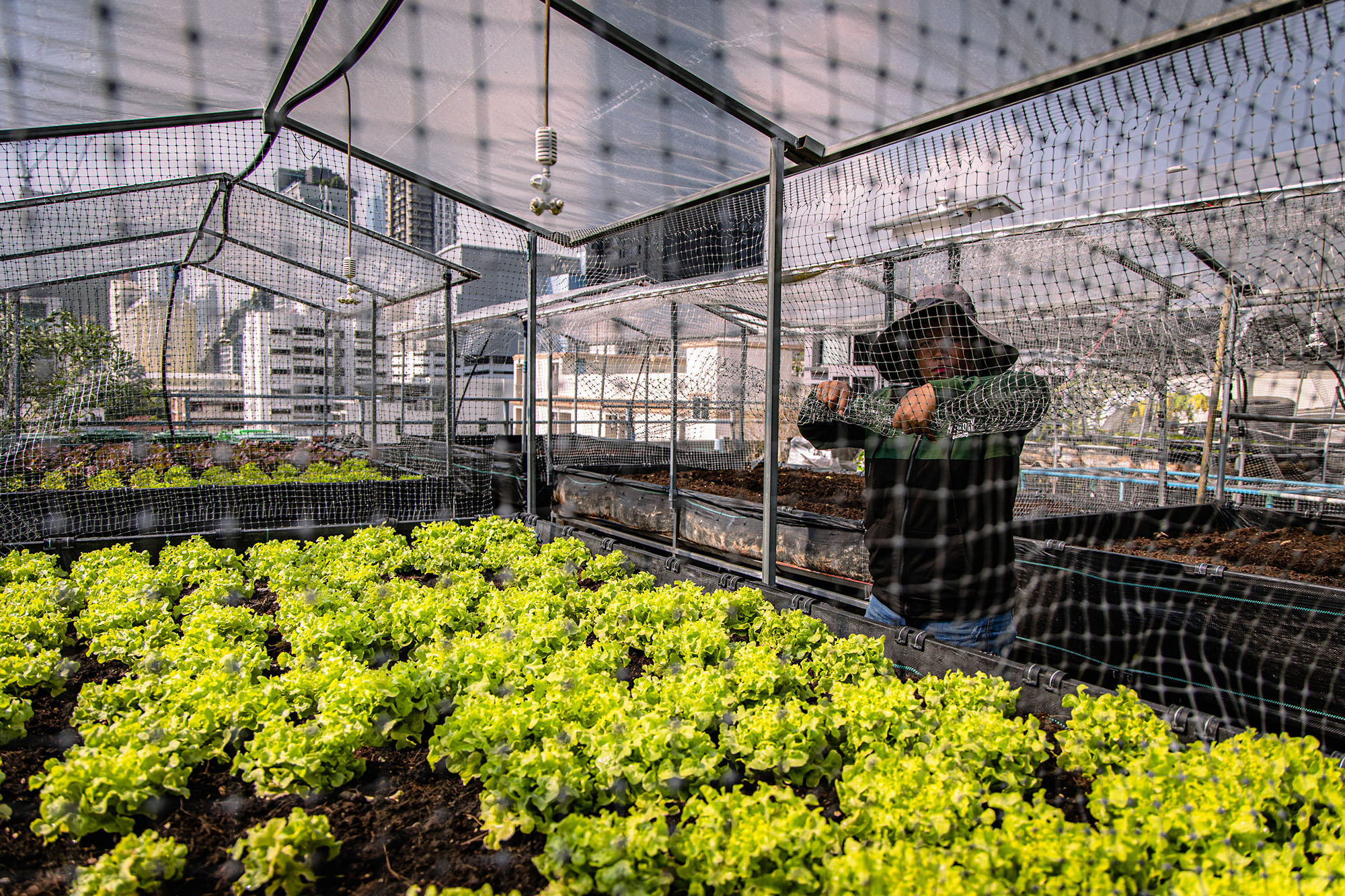
Photo: ©Wissarut Weerasopon
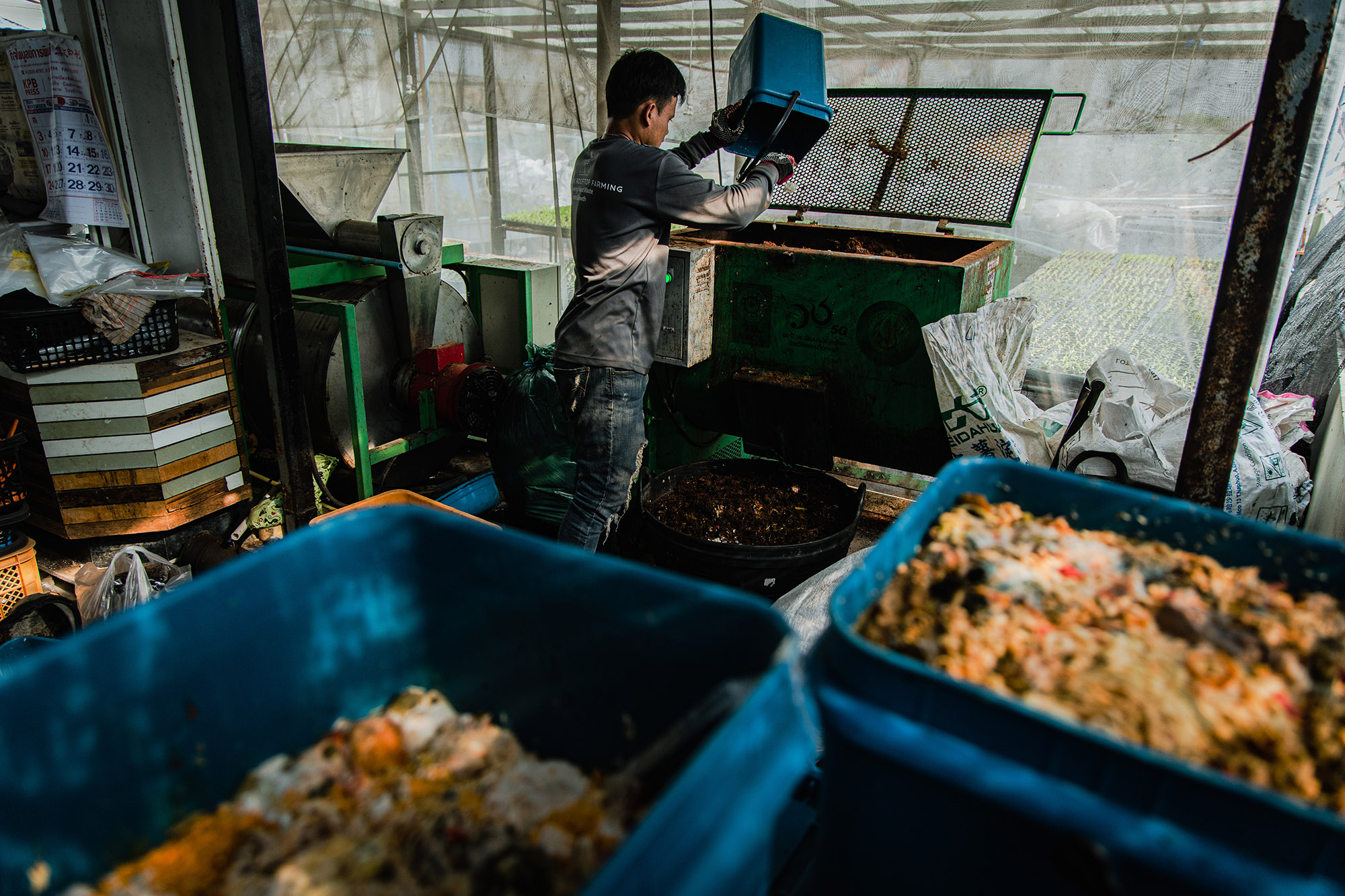
Photo: ©Wissarut Weerasopon

The CEO of DiStar Fresh Farm, Sansin Sriphiromrak, inspects farm produce nurtured and grown in a closed system in a building under the concept, Indoor Vertical Farming, which ensures optimum safety of farm produce (Beyond Organic). He believes that this kind of modern agriculture could help deliver the Sustainable Development Goal with zero hunger by the year 2030, thanks to its principle of less land use with higher yields.
Photo: ©Wissarut Weerasopon
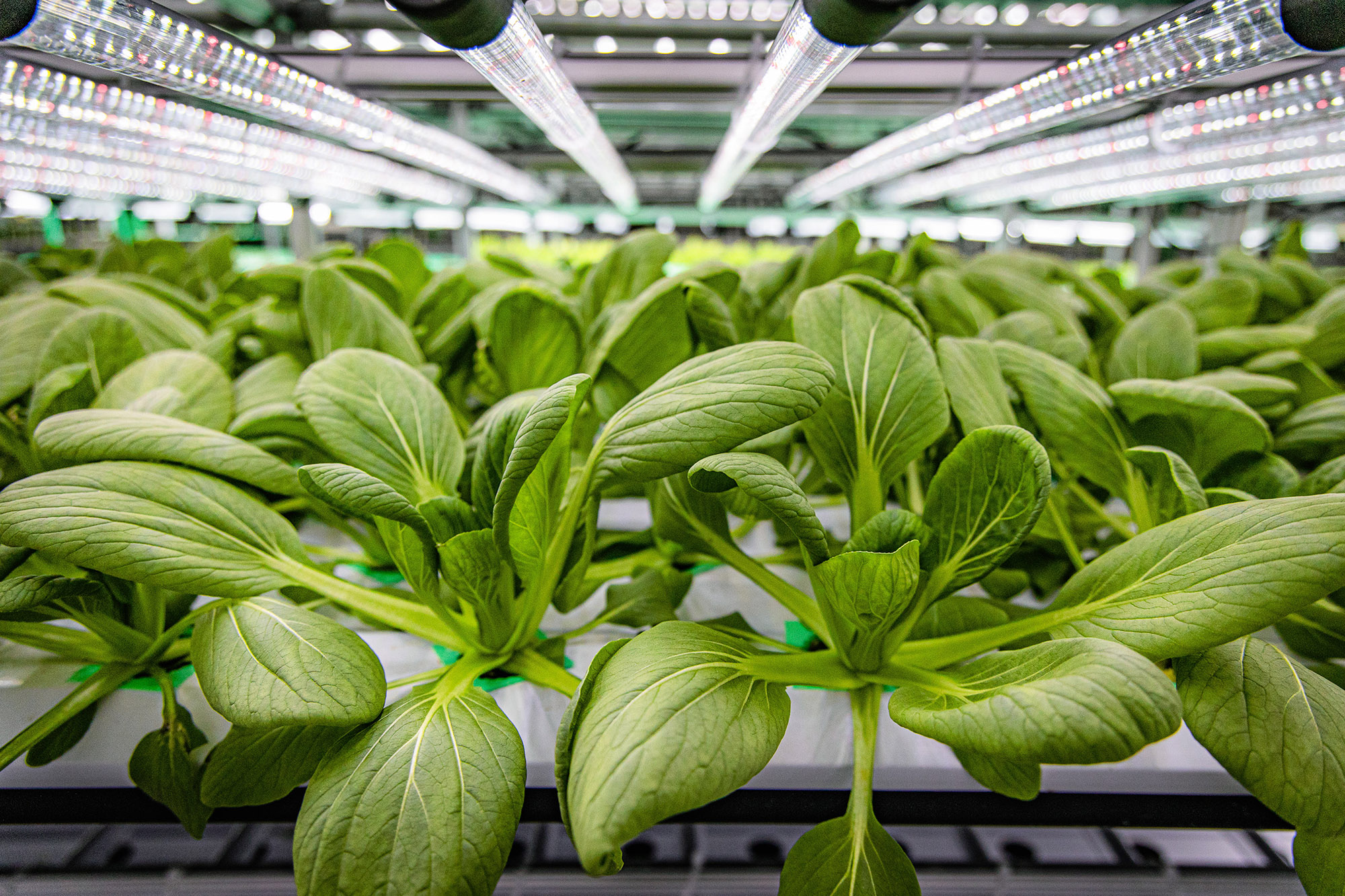
Photo: ©Wissarut Weerasopon
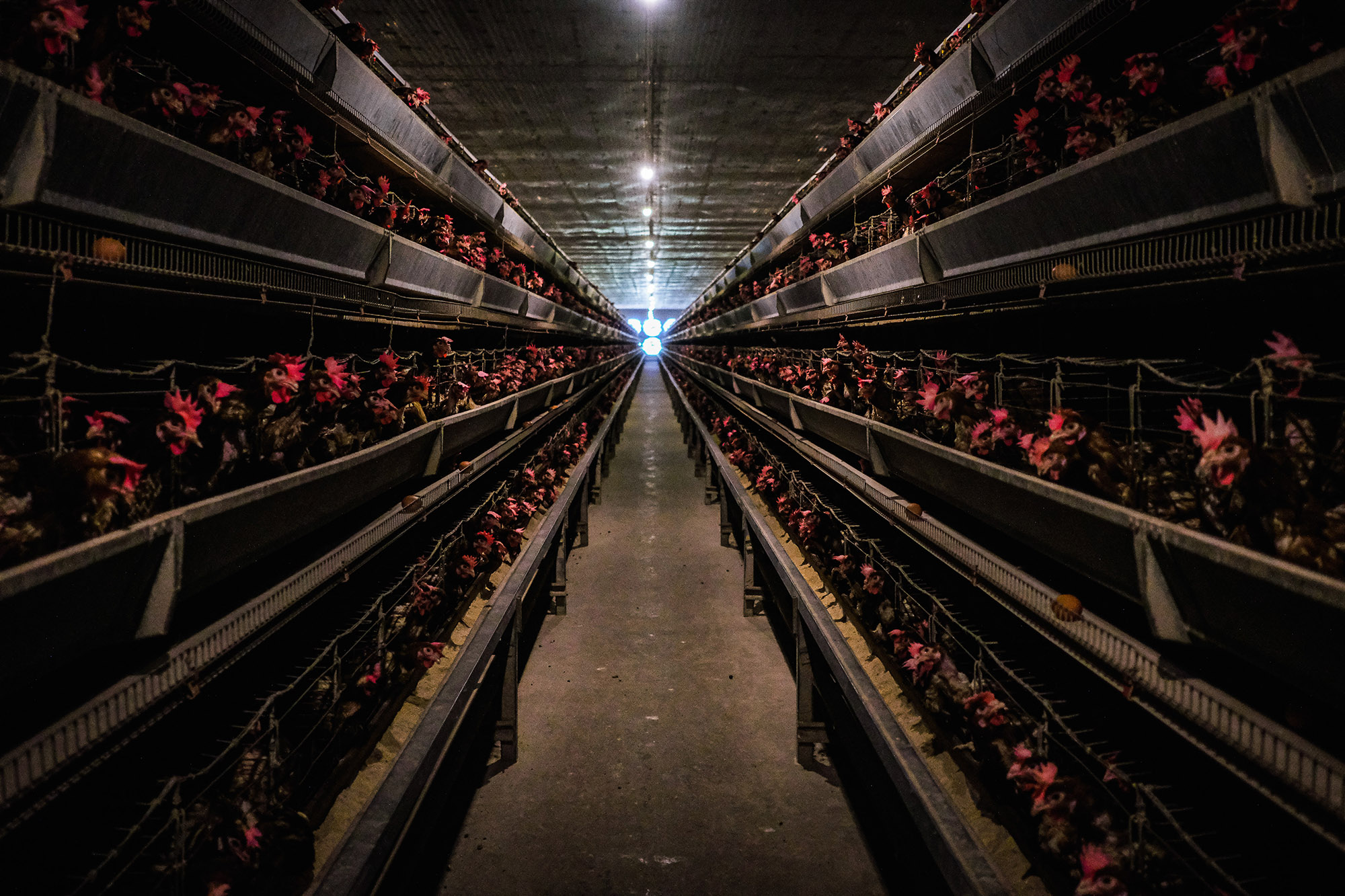
A huge chicken farm in Chachoengsao province is taken care of by a farm owner, who is worried that climate change could impact his business in the future. He says his hens would produce fewer eggs due to insufficient grains and this could lead to a hike in animal food prices. As the price of eggs increase over the years, the poor would have less access to a cheap source of protein.
Photo: ©Wissarut Weerasopon
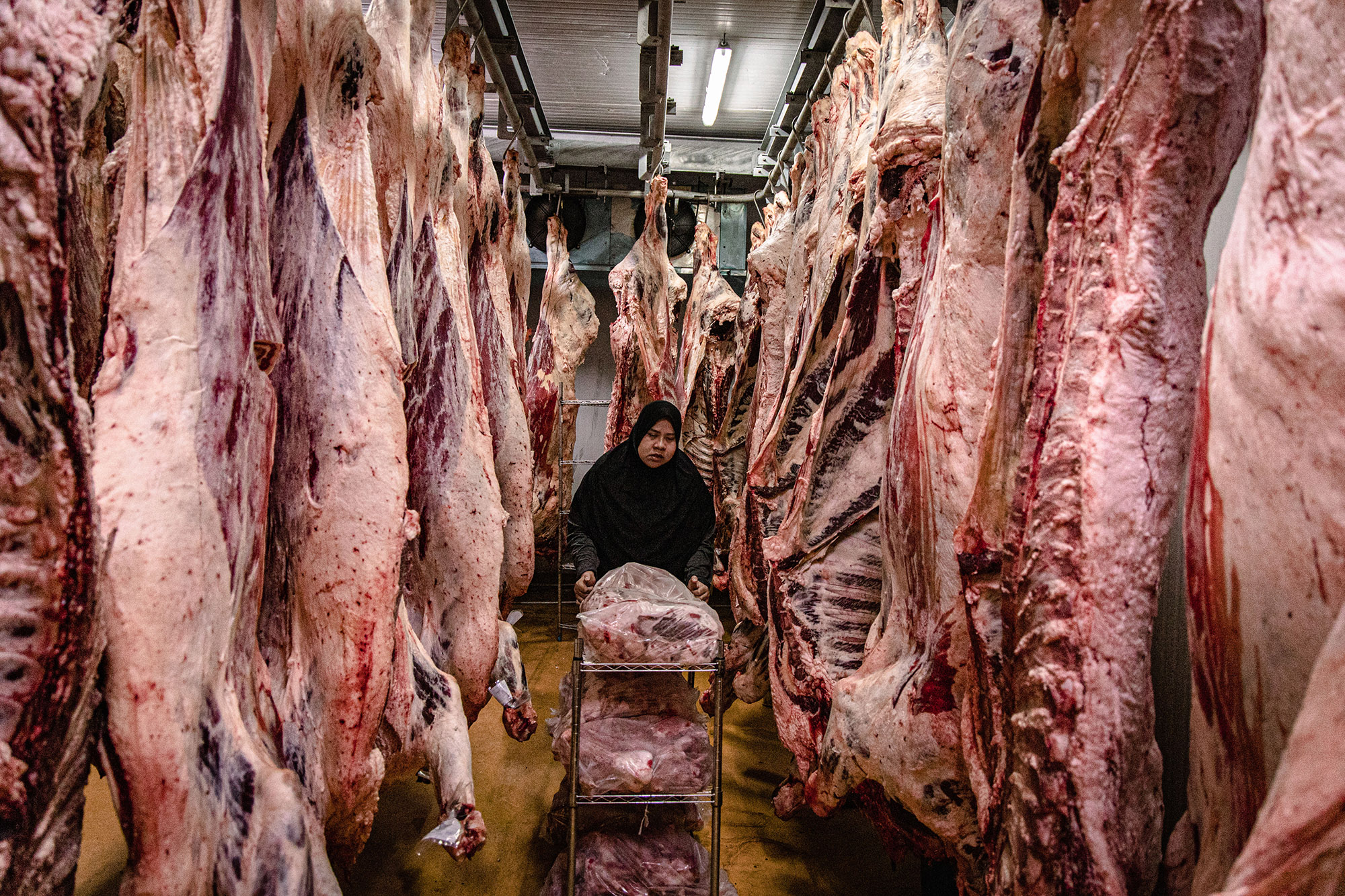
Saveeya Devamad, an owner of Anda Farm, inspects her beef in a beef-processing plant managed with a Zero Waste concept that mitigates environmental impact while adding value to other raw food materials.
Her plant has installed a waste management system through which cow manure and sewage are sent through pipes to a pond and mixed with bran or various nutrients to make fish feed or fertilizer. Her employees can also sell the manure to other vegetable farms and gain additional income.
Photo: ©Wissarut Weerasopon
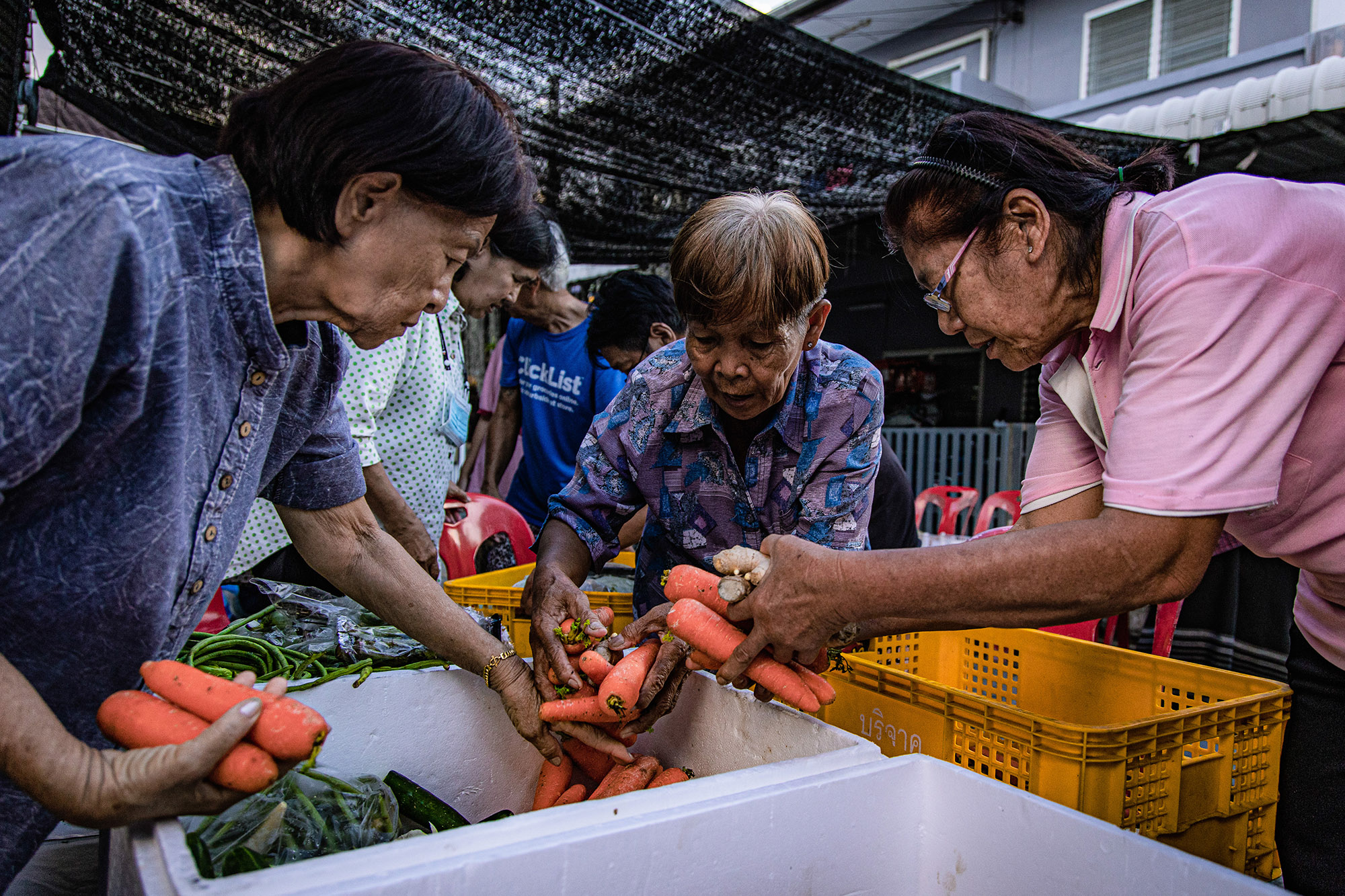
With four branches located in Bangkok, Chiang Mai, Phuket and Hua Hin, SOS Thailand has already supplied good food to 3,700-3,900 communities.
Photo: ©Wissarut Weerasopon
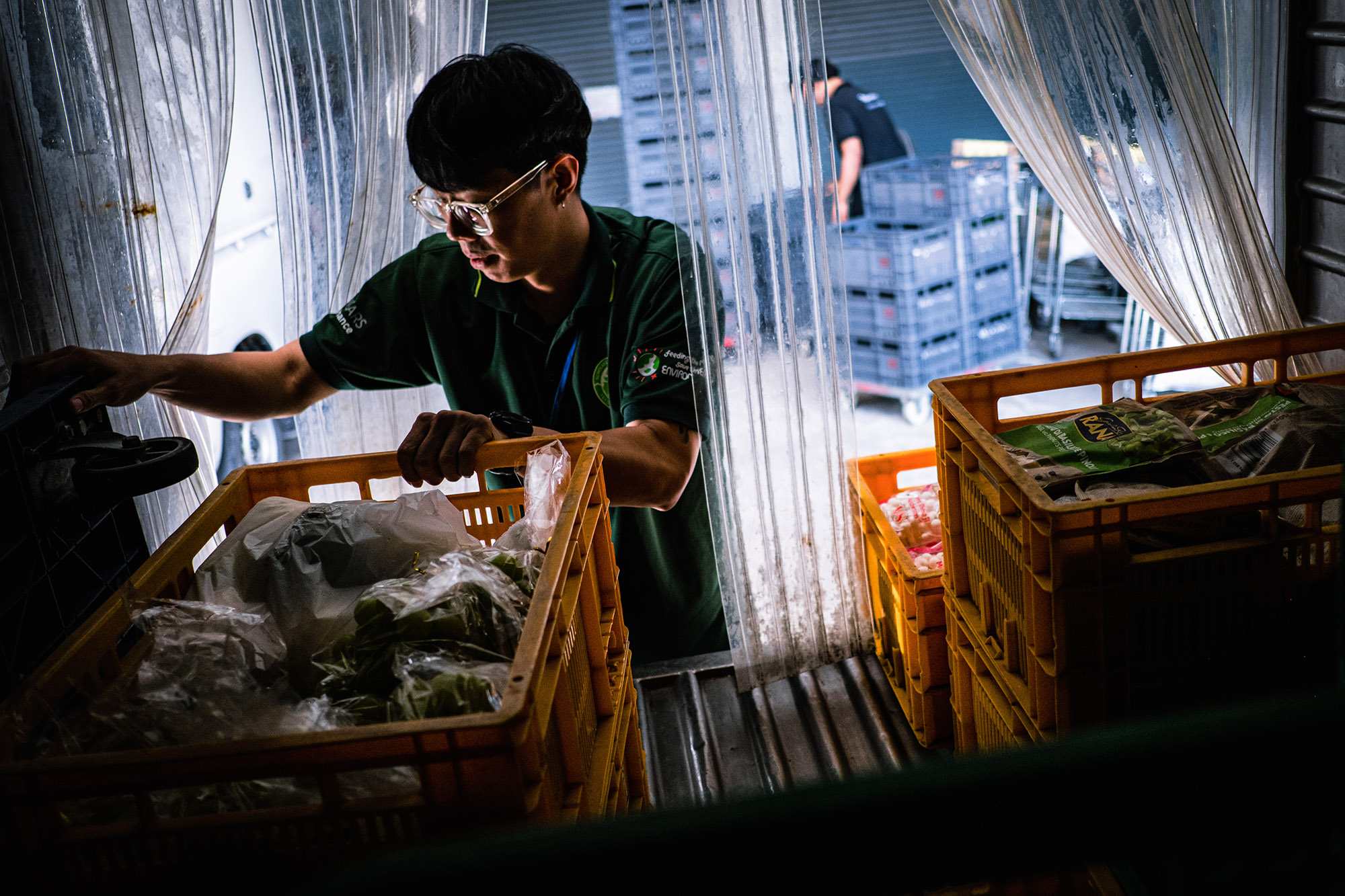
The staff of SOS Thailand collect food items from department stores and hotels that have joined in its food donation projects. The excess food would be later delivered to local residents and communities in need. It’s not expired food or food waste, it’s just food that is not qualified to be put on shelves. The projects follow the organisation’s vision of addressing hunger and food security problems of low-income residents.
Photo: ©Wissarut Weerasopon
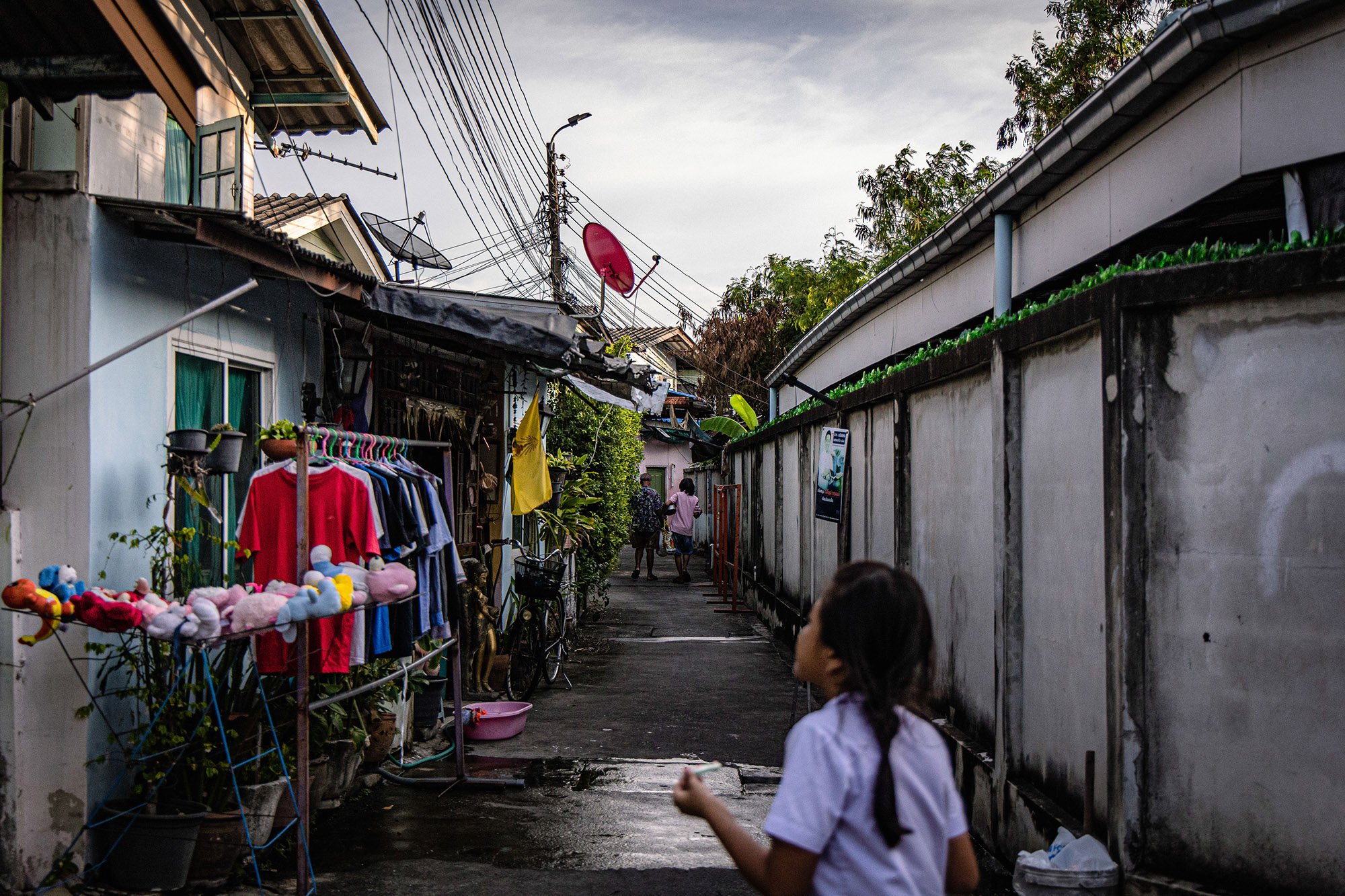
Photo: ©Wissarut Weerasopon
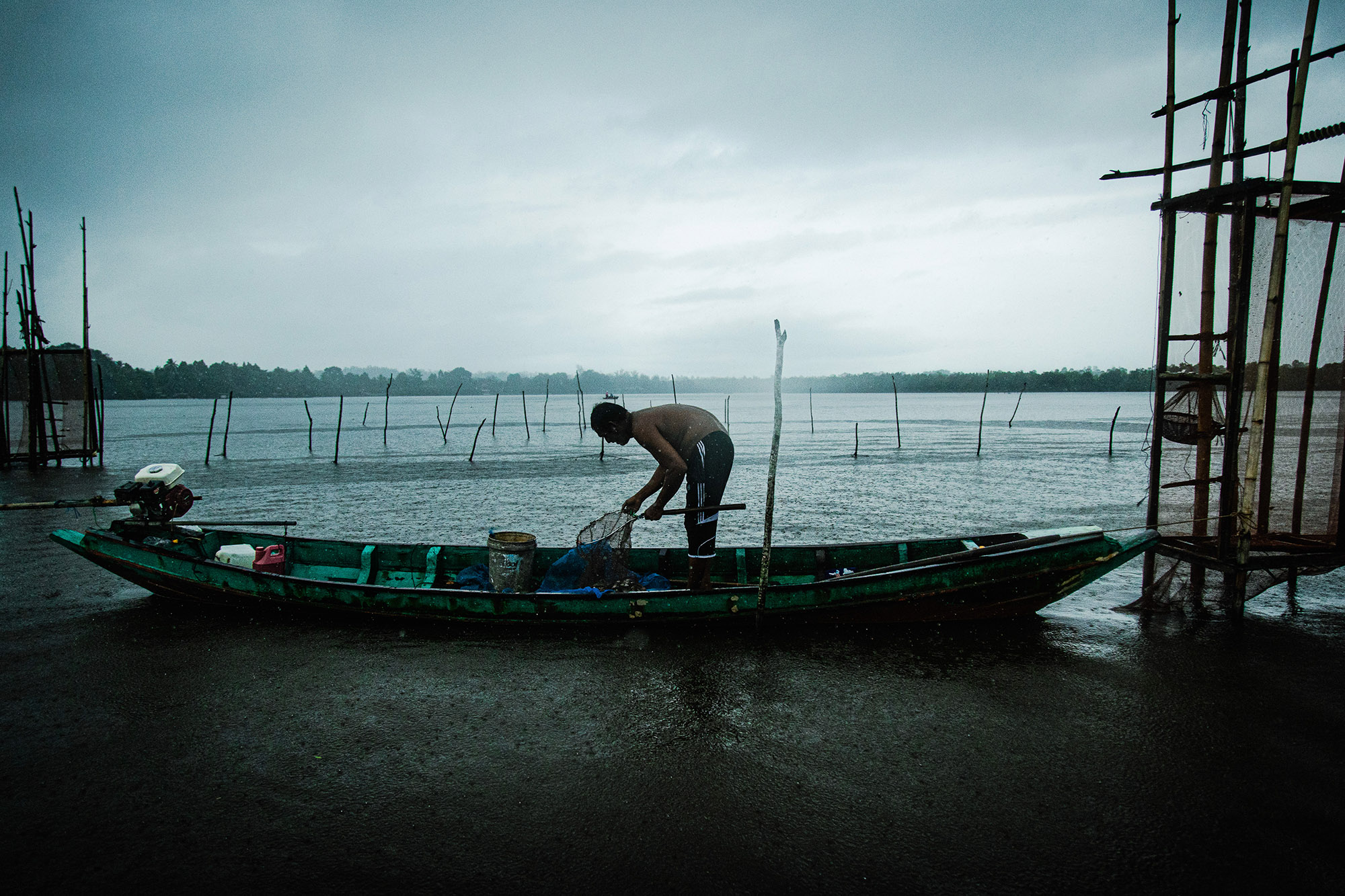
Folk fishing is a micro economic-based community that successfully creates food security for the community. But it now faces critical threats from mega-development projects that destroy the environment, as well as unfair regulations to facilitate giant investors and others.
Photo: ©Wissarut Weerasopon
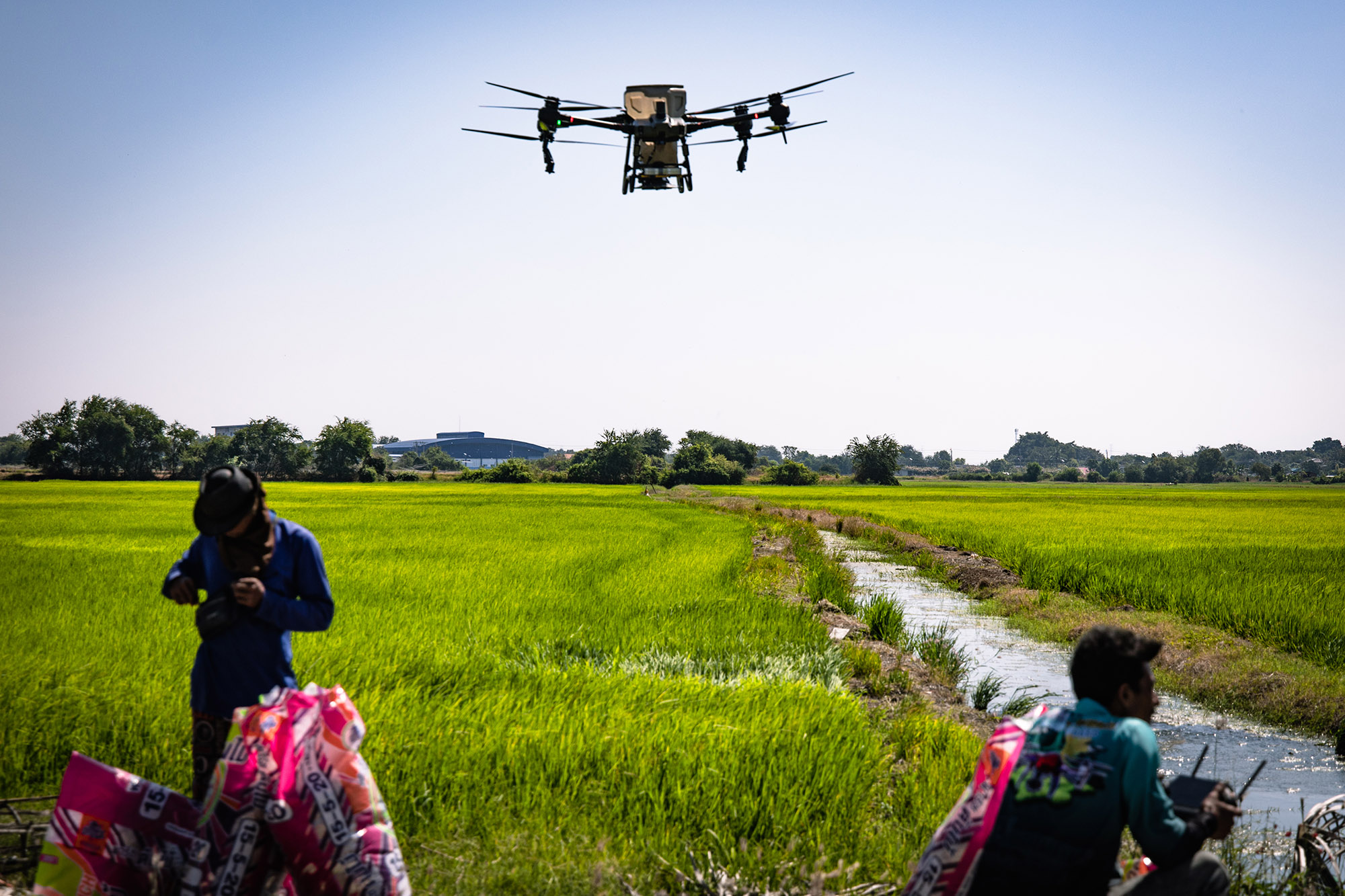
Photo: ©Wissarut Weerasopon
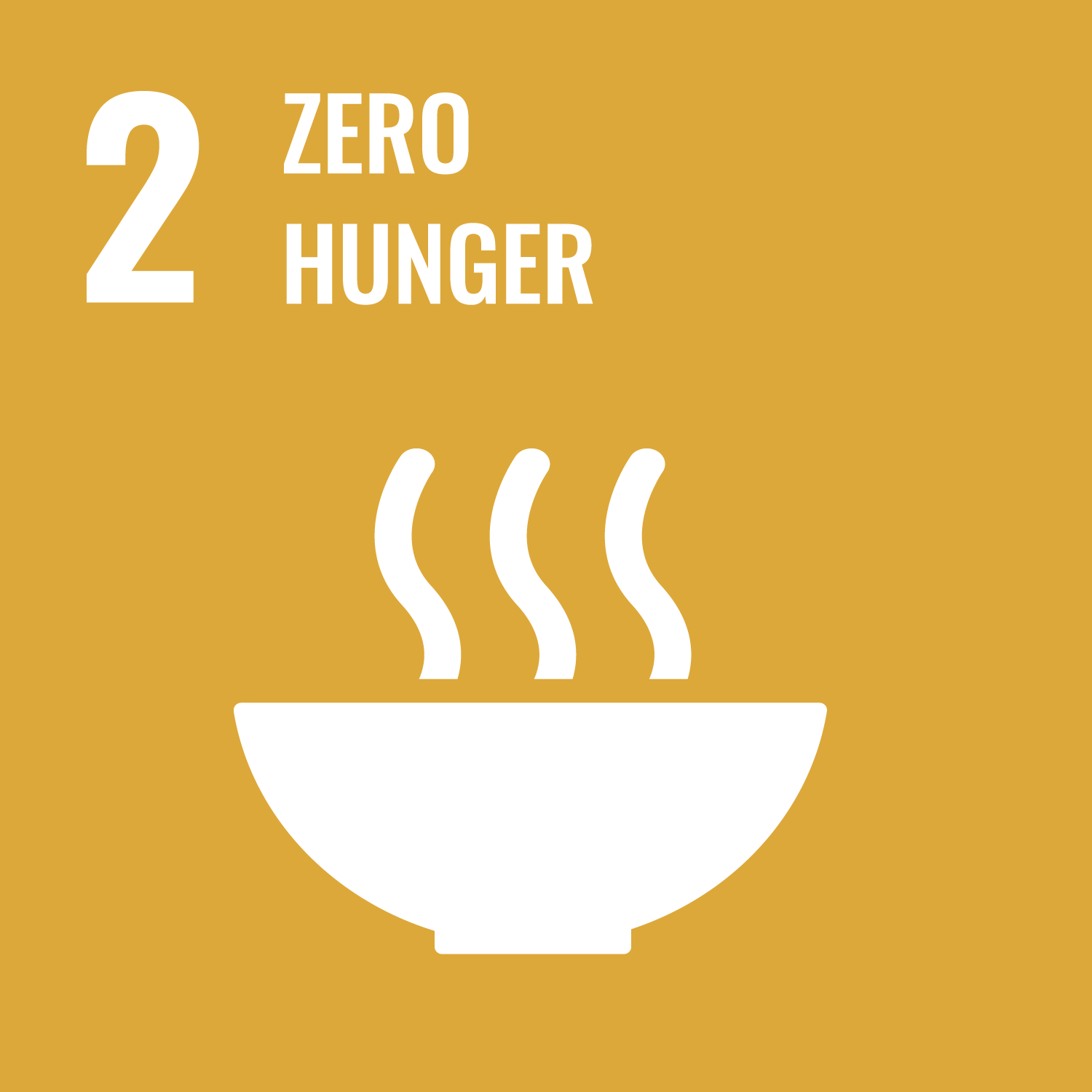
End hunger, achieve food security and improved nutrition and promote sustainable agriculture
Since being conceived in 1992 during the Earth Summit in Rio de Janeiro, Brazil, “sustainable development” has become a buzzword that has helped guide development around the world. The goals have followed a steady trajectory of increased emphasis — from the Millennium Development Goals (MDGs) in 2000 to the Sustainable Development Goals (SDGs) in 2015, strengthening the world’s new development paradigm. At the heart of the SDGs addressed by the UN’s 2030 Agenda for Sustainable Development are 17 key goals that call for action by all countries to end poverty and other deprivations. These must go hand-in-hand with strategies that improve health and education, reduce inequality, and spur economic growth — all while tackling climate change and working to preserve our oceans and forests, according to the UN. The only challenge is: how to translate all those goals into a strong commitment and action. To flesh out the ideas so that people can understand them easily and therefore take action, Bangkok Tribune has come up with a new project: “SDGs I The Depth of Field”, using its signature style of photojournalism — storytelling through photo essays — to interpret and translate the ideas and challenges behind the goals into powerful visual stories told through the lenses of noted photographers.

Indie • in-depth online news agency
to “bridge the gap” and “connect the dots” with critical and constructive minds on development and environmental policies in Thailand and the Mekong region; to deliver meaningful messages and create the big picture critical to public understanding and decision-making, thus truly being the public’s critical voice

